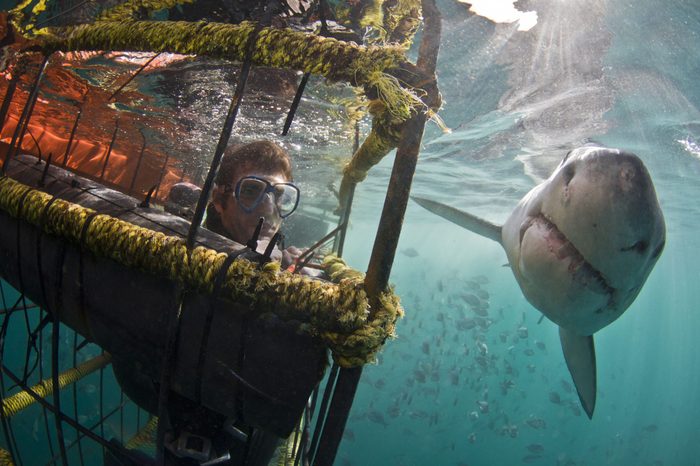Australia’s East Coast Harbors 5,500 Great White Sharks: A Breakthrough Genetic Analysis
Australia’s vast coastline has long been renowned for its diverse marine life, and among its iconic inhabitants is the formidable great white shark (Carcharodon carcharias). In a groundbreaking study, the Commonwealth Scientific and Industrial Research Organisation (CSIRO) has successfully employed genetic analysis to estimate the population of these apex predators along the country’s east coast. This research sheds light on the previously elusive numbers of great white sharks residing in these waters, revealing intriguing insights into their distribution and potential impact on the ecosystem.
For the first time, scientists at CSIRO have harnessed the power of genetic analysis to quantify the great white shark population along Australia’s eastern seaboard. This methodology involves extracting DNA samples from various sources, such as tissue, skin, and teeth, collected from these sharks. By analyzing the genetic diversity within these samples, researchers were able to estimate the number of individual sharks within the population.
According to the CSIRO’s research findings, the estimated population of adult great white sharks along Australia’s east coast is around 750. This figure encompasses the region spanning from the southern coast of Victoria to central Queensland, and extends across the Tasman Sea to New Zealand. Notably, this number is exclusively representative of adult sharks.
However, the study takes into account not only the adult population but also the presence of juvenile great white sharks. Consequently, the total estimated population of great white sharks on the east coast stands at approximately 5,460 individuals. Remarkably, the researchers caution that this number could potentially be much higher, possibly reaching as many as 12,800 individuals.
The revelation of these population estimates holds immense significance for both the scientific community and the general public. Understanding the size and distribution of the great white shark population is crucial for evaluating their ecological role within the marine ecosystem. These apex predators play a vital role in maintaining the balance of marine populations, preventing overpopulation of prey species and promoting biodiversity.
Moreover, the newfound knowledge of the great white shark population can inform conservation efforts and marine management strategies. By comprehending the numbers and locations of these predators, authorities can better tailor their efforts to ensure the protection of both the sharks and the safety of coastal communities.
The CSIRO’s pioneering study, utilizing genetic analysis to estimate the great white shark population along Australia’s east coast, marks a significant milestone in marine research. The revelation of approximately 5,500 great white sharks cruising in these waters, with the potential for an even higher number, underscores the importance of these apex predators in maintaining the health of the marine ecosystem. This research not only deepens our understanding of these iconic creatures but also guides future conservation initiatives to ensure their survival and the preservation of marine biodiversity.
Hits: 15









